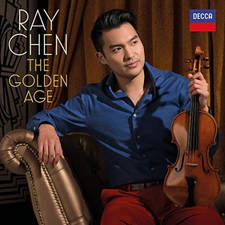Classical music, colours and emotions linked
17 May 2013, 10:57 | Updated: 17 May 2013, 11:08
What colour is Mozart's Requiem? A new study has confirmed a link between emotion, classical music, and colour.
According to a new study, we're wired to make connections between music and colour, based on how the pieces make us feel. Mozart’s lively Flute Concerto No. 1, for example, is most often associated with bright yellow and orange, whereas his Requiem is more likely to be linked to dark, bluish grey.
In three experiments at UC Berkeley, participants listened to 18 pieces by Bach, Mozart and Brahms, in both major and minor keys, and in a variety of speeds. When asked to pair the music with a choice of 37 different colours, they consistently associated bright colours with upbeat music, and darker colours with more sombre pieces.
The link between music, colour and emotion was also measured, with participants rating each piece on a scale of happy to sad, strong to weak, lively to dreary and angry to calm. The emotion behind the music was often responsible for the colour association.
“The results were remarkably strong and consistent across individuals and cultures and clearly pointed to the powerful role that emotions play in how the human brain maps from hearing music to seeing colours,” said Stephen Palmer, a scientist from UC Berkeley, in a study published this week.
Northern Sinfonia will demonstrate the findings when they perform at International Association of Colour conference at the University of Newcastle on July 8, accompanied by a coloured light show.
Classical composers throughout history have associated music and colour. Beethoven described the key of B minor as a 'black' key, Scriabin linked E flat major with a purple-red colour, and Rimsky-Korsakov described D major as golden brown.


































